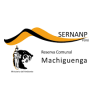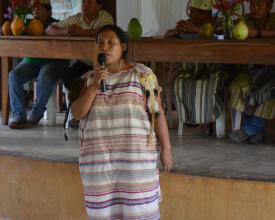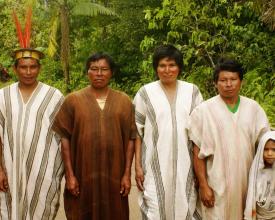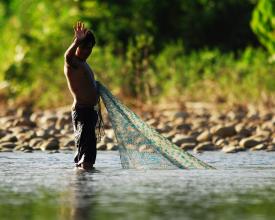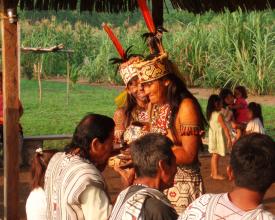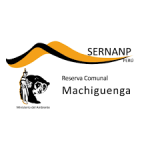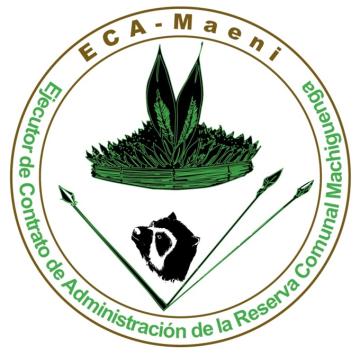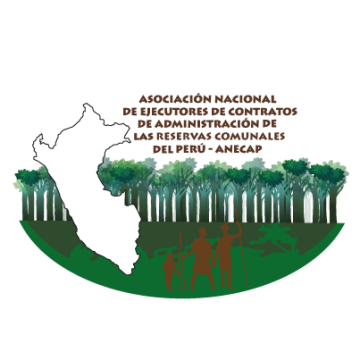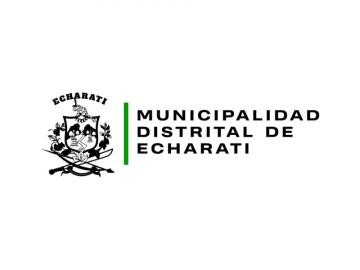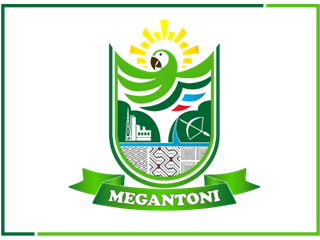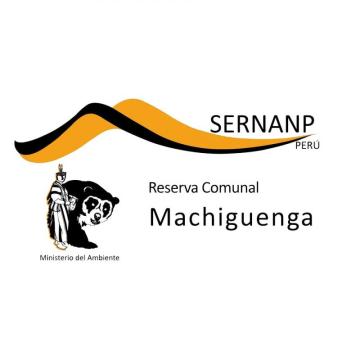
Life plans as a basic tool for articulation in the territory of the Machiguenga Communal Reserve.
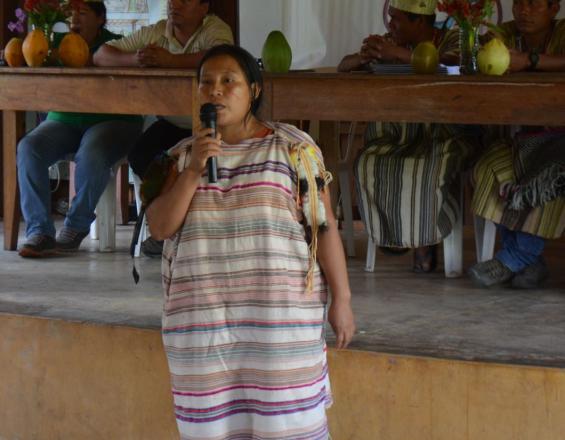
The Machiguenga Communal Reserve is home to great biological and cultural diversity, inhabited by native communities of the Matsigenka, Ashaninka, Kaquinte and Yine-Yami ethnic groups, who have been the guardians of the forest and its riches since ancestral times. The good living of these populations requires the articulation of the different levels of government and local stakeholders, which is why the life plans are the key tools that allow them to articulate their vision of the future with the activities of the State, civil society and the private sector.
The partner communities of the Executor of Administration Contract "MAENI"(ECA MAENI) that have PDV are Chakopishiato, Koribeni, Poyentimari and Tangoshiari, elaborated with the support of the ECA team and the Chief of the Machiguenga RC.
The VDPs are based on 3 pillars to:
- Self-reflect on the current state of the community,
- Thinking and planning for the future of the community, and
- Connect with external actors in order to achieve their goals.
Context
Challenges addressed
- Discontinuity and instability of community capacity building processes.
- Difficulty communicating in the mother tongue.
- Lack of technological equipment and technical capacity.
- Intermittence of projects promoted by ECA Maeni due to insufficient financing and lack of permanent personnel.
- Ensure that the projects promoted by local governments are compatible with the objectives of the ANP, without affecting the integrity of the RCM and are aligned with the goals established in the life plans (PNV) of the native communities.
- Implementation of these PNVs in the partner communities.
- Updating of the PNVs in the above mentioned communities.
- Replication of the PNV experience in other communities to ensure that all of them have this planning document.
Location
Process
Summary of the process
Development in western thinking is synonymous with economic growth and acquisition of material things (houses, cars, money in the bank, roads), however the communities have as a fundamental pillar the good living "kametza asaike", they propose their development based on a harmonious life, of full coexistence among them and with nature because it provides them with material for their houses, medicinal plants for their health, bush meat and fish for their food,All this is encompassed in the conservation of biodiversity and the management of the forest by the native communities, this is contained in their ancestral knowledge, which should be embodied in a document "the life plans", which were built in a participatory manner, They were built in a participatory manner, gathering the knowledge, conceptions and future desires of the members of the communities and understanding that they are not alone, being strengthened and accompanied by the team of indigenous leaders of ECA Maeni, the Chief of the Machiguenga Communal Reserve, the Ministry of Culture and The Field Museum.
Building Blocks
Biodiversity conservation
The Machiguenga Communal Reserve maintains an ecosystem conservation status of 98.8161 %, with a co-management model with the ECA Maeni that represents 14 native communities, 1 colonist settlement and 3 federations (COMARU, FECONAY and CECONAMA). In order for this model to work, it is necessary that the members of the communities themselves promote and encourage conservation for their own benefit in a win-win ideal, where the RCM conserves its natural and cultural values and the communities can be strengthened in their own organizational system and improve employment and income opportunities through sustainable economic activities.
The protected natural area and its buffer zone are territories where there is a great biodiversity of flora and fauna exploited by the communities, in order to ensure the conservation and sustainable use of resources with an associated landscape approach.The vision of the area is articulated with the vision of the communities, in terms of the management of their territories and resource management, which is why the life plans reflect their way of thinking and organizing themselves and reflect how they want to improve, seeking "good living" from their own form of governance.
Enabling factors
- The native communities know their territory and zones of natural and cultural resource use, and conserve their traditional knowledge of forest management.
- The RCM promotes sustainable use of natural resources, avoiding pressures on the ANP and conserving existing biodiversity for the benefit of their communities.
- ECA Maeni knows the priorities and vision of the communities and together with the RCM leadership they achieve more relevant actions.
Lesson learned
- It is necessary that the protected natural areas work jointly and integrally with the communities, taking into account the conservation of the territory, knowing the environmental strengths of the communities in order to promote actions that benefit both.
- In order to conserve biodiversity in the NPA, it should be taken into account that the communities' territories are part of the fauna's movement areas; therefore, both areas are equally important.
- The management of the NPA should be adapted to the knowledge, priorities and potential of the native communities.
Participatory management
Participatory management has been carried out since the establishment of the NPA at the request of the communities, with their benefit in mind, as well as that of future generations; however, over time this dynamism was focused on conservation with specific participation of the communities.
The life plans are a participatory process in which the opinion of the community members is obtained, reflecting on each dimension (cultural, environmental, social, political and economic), allowing for a diagnosis in order to coordinate actions aimed at sustainable behaviors that are also aligned with the objectives and vision of the ANP's master plan.
These visions contribute to more pertinent actions that help to articulate with other planning documents in the territory and the involvement of more stakeholders as part of a key strategy to achieve effective conservation.
The RCM leadership and the Maeni ECA develop technical and social capacities that promote the active participation of the communities in the elaboration and implementation of the life plans, oriented to the conservation of the NPA.
Enabling factors
- Greater participation of the communities in the conservation of the ANP.
- The leadership of the RCM and the Maeni ECA tend to sustainable alternatives.
- Communities are strengthened in governance allowing them to be more participatory in different spaces, making their indigenous development approach known.
- The communities are aware of their main role as executors in the VDP implementation processes and promote the involvement of other actors in guiding roles such as public servants.
Lesson learned
- The involvement of communities is key, especially if they are strengthened and participate by making their vision and priorities known, promoting sustainable projects that avoid pressures within the PNA. For this reason, the RCM is currently inserted in the concerted development plans of the Municipalities of Megantoni and Echarati.
- Experiences of life plans are replicated in other communities.
- Participation spaces such as the PDV multisectoral roundtable, as a promoter of the elaboration and implementation of these plans, seeks a dynamic of opportunities and better interventions, optimizing resources, time and visualization of the ANP.
- The visualization of the PDV experience brings opportunities for technical, economic, social and environmental support and cultural strengthening of public and private entities.
- Communication with communities is improved due to the approach in the process of construction and implementation of life plans.
Impacts
- Empowerment of communities without losing sight of the relationship with the Machiguenga CR.
- The population has better information (economic, social, cultural, political, natural) to make informed decisions.
- The community establishes its priorities to maintain and improve its quality of life.
- Enhancement of the history, needs and demands of the Ashaninka, Kakinte and Matsigenka indigenous peoples.
- Promoting the integral development of culturally diverse groups.
- Promotion and implementation of intercultural perspectives in the reserve's planning and management.
- Implementation of management and planning tools compatible with the reserve's master plan, the Echarati and Megantoni district's local development plan.
- Strengthening co-management with the rescue of ancestral and traditional knowledge of the native communities of Poyentimari and Koribeni before the National Institute for the Defense of Competition and Protection of Intellectual Property(INDECOPI).
- Installation and implementation of a multisectoral working group on life plans at the provincial and regional levels.
- Technical assistance for native communities to access sustainable projects (handicrafts, tourism and agriculture).
- Capacity building for community promoters for the construction of face-to-face and virtual life plans.
Beneficiaries
The partner native communities:
- ECA Maeni of Koribeni
- Poyentimari
- Tangoshiari and Chacopishato
- Kochiri
- Puerto Rico
- Miaria
- Timpia.
Sustainable Development Goals
Story
"The life plan is the long-term planning document, according to our objectives, goals or vision that we have in our community, to fulfill our wishes and desires, it also helps us to see and diagnose what are the needs of the community" - Gilberto Chinchay Sanchez CN Tangoshiari chief.
"For us as a people it is very important because it makes us reflect on our strengths such as our customs and beliefs that we must continue practicing and transmitting from generation to generation. It will allow us to make arrangements and know how to act and live in a better community" -Jerman Aventi Shipi, promoter of the Tangoshiari NC Nucleus.
The community has set as a development paradigm the good living/ kametza asaike, everything that favors a harmonious and full life of coexistence "living in peace, mutual help (solidarity), sharing among us (reciprocity), living well with nature, because we are always in contact with it, it is more than having money, it is to value what our forests give us to make our houses, in health with our medicinal plants and in education valuing our knowledge". Residents of the Mashia and Santa Fe annexes.
The life plans can be articulated with RCM (master plan) and local concerted development plans, which can be seen in the priorities and visions of each of the communities. In addition, the priorities coincide and are thus articulated with the objectives of the master plan, contributing to achieving the vision of the protected natural area, articulating effective management to the dimensions of the communities' LDPs.
Each life plan is different, with different realities, and some have advanced more than others in different ways.
- Promoting funds for sustainable projects (crafts, tourism and research).
- Promoting surveillance and control tasks with the National Forest Conservation Program.
- Enhancing the value of their ancestral knowledge and articulating with entities such as INDECOPI, Ministry of Culture and others.
- Empowerment of community leaders or chiefs allows for more favorable management for their community members.
- Signing of a conservation agreement with the native community of Poyentimari and an agreement with the CN of Puerto Rico for the use of seeds.
- Increased participation of women in decision-making spaces promoting a gender equity approach.
